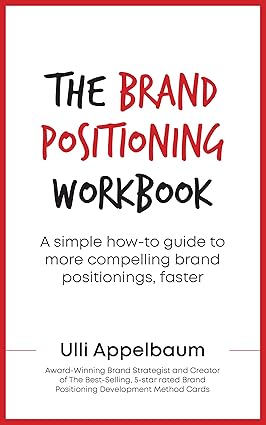In today's hyper-competitive market, building a strong brand is no longer a luxury, it's a necessity. This white paper explores two critical aspects of brand success:
Positioning for Advantage: Techniques and Strategies to Grow Brand Value & The Long Game: How to Be a Long-Term Thinker in a Short-Term World
White Paper
1. Introduction
In today's hyper-competitive market, building a strong brand is no longer a luxury, it's a necessity. This white paper explores two critical aspects of brand success:
- Positioning for Advantage: How to strategically position your brand to stand out from the competition and capture valuable market share.
- The Long Game: The importance of long-term thinking and sustainable strategies in a world obsessed with short-term gains.
2. Positioning for Advantage: Techniques and Strategies to Grow Brand Value
2.1 Defining Brand Positioning
- Core Concept: Brand positioning is the act of defining your brand's unique place in the minds of your target audience. It's about identifying your competitive advantage and communicating it clearly and consistently.
- Key Elements:
- Target Audience: Who are you trying to reach? What are their needs, wants, and desires?
- Competitive Analysis: Who are your main competitors? What are their strengths and weaknesses? How are they positioned in the market?
- Unique Selling Proposition (USP): What makes your brand truly unique and different from the competition?
- Value Proposition: What value do you offer to your customers that justifies a premium price or loyalty?
- Brand Personality: What human characteristics (e.g., fun, sophisticated, trustworthy) best describe your brand?
2.2 Techniques for Effective Positioning
- Differentiation:
- Product/Service Differentiation: Unique features, superior quality, innovative technology.
- Customer Experience Differentiation: Exceptional service, personalized interactions, loyalty programs.
- Brand Experience Differentiation: Unique brand story, strong emotional connection, distinctive brand identity.
- Market Segmentation: Dividing the market into smaller, more manageable segments with specific needs and preferences.
- Competitive Advantage: Identifying and leveraging your strengths to outperform competitors. This could include:
- Cost Leadership: Offering the lowest prices in the market.
- Differentiation: Offering unique and superior products or services.
- Focus: Concentrating on a specific niche market.
2.3 Strategies for Growing Brand Value
- Content Marketing: Creating and sharing valuable, relevant, and consistent content to attract and engage your target audience.1
- Social Media Marketing: Building a strong social media presence to connect with customers and build brand awareness.
- Influencer Marketing: Partnering with influential individuals to reach new audiences and build credibility.
- Public Relations: Building and maintaining positive relationships with the media to generate positive press coverage.
- Customer Relationship Management (CRM): Building strong customer relationships through personalized communication and exceptional service.
3. The Long Game: How to Be a Long-Term Thinker in a Short-Term World
- The Dangers of Short-Term Focus:
- Eroding Brand Equity: Short-term tactics can damage brand reputation and long-term customer relationships.
- Missed Opportunities: Focusing on immediate results can prevent businesses from investing in long-term growth opportunities.
- Increased Vulnerability: Short-term strategies can leave businesses ill-prepared for unexpected challenges.
- Cultivating a Long-Term Mindset:
- Vision and Mission: Define a clear and compelling vision for the future of your brand.
- Sustainable Practices: Adopt environmentally and socially responsible practices that benefit both your business and the planet.
- Continuous Innovation: Invest in research and development to stay ahead of the curve and adapt to changing market conditions.
- Customer-Centric Approach: Prioritize customer satisfaction and build long-term customer relationships.
- Strong Company Culture: Foster a culture of collaboration, creativity, and long-term thinking among employees.
4. Conclusion
Positioning for advantage and cultivating a long-term mindset are essential for building a successful and enduring brand. By understanding your target audience, differentiating your brand, and focusing on sustainable growth, you can create a strong foundation for long-term success in today's dynamic marketplace.
References
- Positioning: The Battle for Your Mind by Al Ries and Jack Trout
- Building Strong Brands by David Aaker
- Marketing Management by Philip Kotler and Kevin Lane Keller
- Blue Ocean Strategy by W. Chan Kim and Renée Mauborgne
- The 7 Habits of Highly Effective People by Stephen R. Covey
- The Brand Positioning Workbook: A Simple How-To Guide To More Compelling Brand Positionings Faster by Ulli Appelbaum
Note: This is a general framework. The specific techniques and strategies will vary depending on the industry, target market, and individual business goals.
Disclaimer: This white paper is for informational purposes only and should not be considered financial or investment advice.
This white paper provides a foundational understanding of the concepts. For a more in-depth analysis, further research and consultation with marketing professionals are recommended.
I hope this revised version is helpful! Contact keencomputer.com for details.
e
